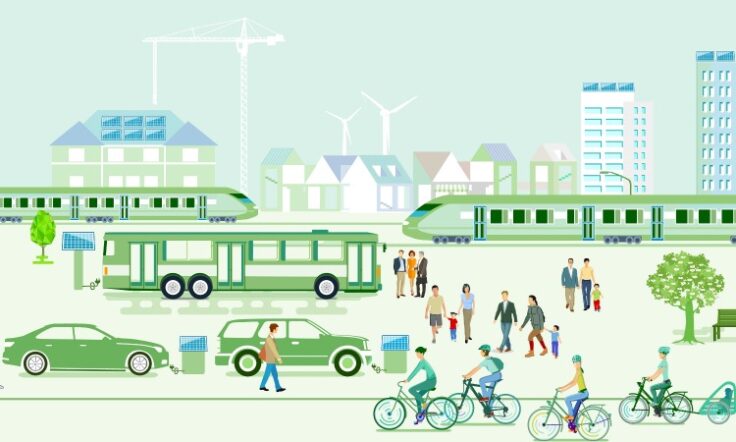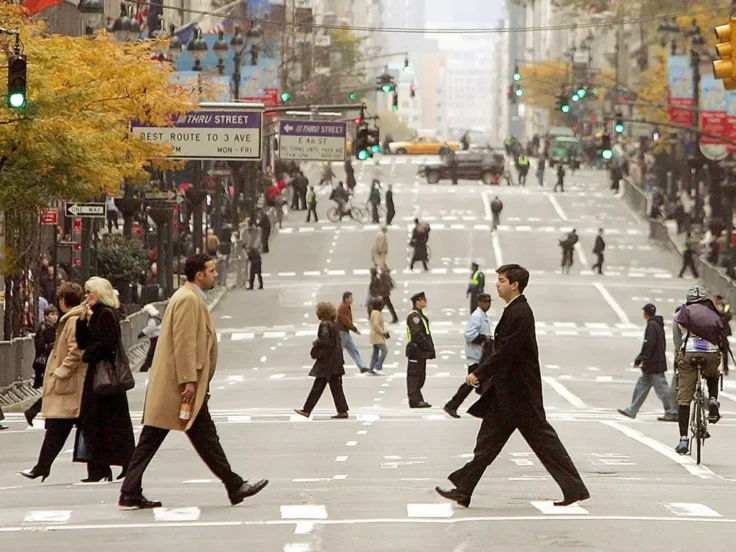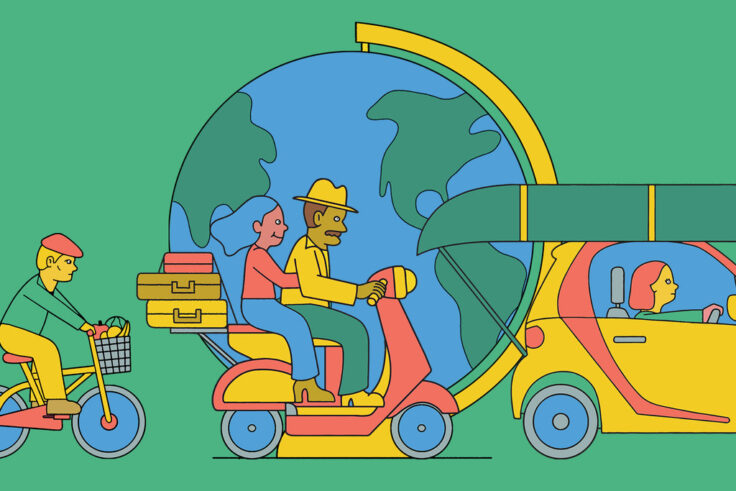As the world faces increasingly urgent environmental concerns, embracing sustainable transportation solutions is becoming more critical. Rapid urbanization and a growing reliance on fossil fuels have all led to the need for more efficient, eco-friendly ways of getting around.
Turning to sustainable transportation, such as refurbished electric bikes at upway.co and public transit, can benefit the environment and commuters’ mental and physical health.
What is Sustainable Transportation?

Sustainable transportation refers to any mode of transportation that reduces or eliminates harmful emissions, minimizes the use of non-renewable resources and promotes a healthier environment.
The goal of sustainable transportation is to reduce the environmental impact of human movement while maintaining accessibility, safety and affordability. For example, public transportation can reduce CO₂ emissions by 45 percent and e-biking can save 249 g of CO₂ for every .62 miles traveled.
Sustainable transportation is revolutionizing commuting by providing cleaner and more efficient alternatives to traditional modes of transport and promoting healthier lifestyles among commuters.
Types of Sustainable Transportation
There are many forms of sustainable transportation for commuters in heavily populated areas. From electric cars to bicycles and public transit, these sustainable options help reduce carbon emissions, improve air quality and ease congestion in urban areas.
Electric Cars

Electric vehicles (EVs) are a promising sustainable transportation solution, as they produce no tailpipe emissions and rely on electricity rather than fossil fuels. This means that an electric car’s environmental impact is greatly reduced compared to a traditional internal combustion engine vehicle.
According to the Environmental Protection Agency (EPA), the lifecycle greenhouse gasses released from an EV was 65 percent less than a gas car for fuel usage. As renewable energy sources like solar and wind power become more widespread, electric cars will become an even greener option.
Electric Bikes
Electric bicycles, or e-bikes, are another sustainable transportation alternative gaining popularity worldwide. These bikes use a battery-powered motor to assist the rider, making it easier to cover longer distances, climb hills or simply commute more comfortably. A 2020 study found that e-bike usage could reduce CO₂ emissions from passenger transportation by 12 percent, with a total reduction of 225 kg of CO₂ per year.
There are several types of e-bikes available, including electric city, foldable and mountain bikes:
- Electric City Bikes: Electric city bikes are designed for urban environments, often featuring comfortable upright seating and wide tires for a smooth ride on city streets.
- Foldable Electric Bikes: Folding e-bikes offer a convenient option for those with limited storage space or who need to combine cycling with other forms of transportation, such as trains or buses.
- Electric Mountain Bikes: Mountain e-bikes have robust frames and powerful motors, making them ideal for off-road adventures.
Walking

Walking is the most sustainable form of transportation, as it produces no emissions and requires no fuel. Individuals can significantly reduce their carbon footprint and improve their overall health by choosing to walk instead of using motorized transportation. As cities invest in infrastructure to encourage walking, such as pedestrian-friendly streets and green spaces, the viability of walking as a primary mode of transportation increases.
Public Transportation
Public transportation, such as buses, trains, and subways, is essential to sustainable transportation systems. Public transit helps reduce traffic congestion, decrease air pollution, and conserve energy by offering an efficient and affordable means of getting around. As more cities transition to electric or hybrid vehicles for their public transportation fleets, the environmental benefits of using public transit continue to grow.
Benefits of More Sustainable Transportation
Sustainable transportation reduces greenhouse gas emissions and brings numerous benefits to individuals and society. Some of the advantages of adopting more sustainable transportation modes include:
- Reduced environmental impact: Sustainable transportation options significantly impact the environment by reducing emissions and limiting reliance on fossil fuels. Reducing emissions and resource consumption contributes to a cleaner environment and helps combat climate change.
- Improved public health: Active transportation modes like walking and cycling promote physical fitness and mental well-being. Also, reduced emissions from sustainable transportation can improve air quality, resulting in fewer respiratory illnesses and other health issues associated with pollution.
- Economic benefits: Sustainable transportation options can be more cost-effective in the long run, as they typically have lower fuel and maintenance costs. Additionally, investment in sustainable transportation infrastructure can create jobs and stimulate local economies.
- Enhanced social equity: By providing affordable and accessible transportation options, sustainable transportation can promote social equity and mobility for all members of society. This includes low-income individuals, people with disabilities and those without access to personal vehicles, ensuring everyone can access employment, education and essential services.
- Reduced traffic congestion: As more people opt for sustainable transportation options, the demand for roadway space decreases, leading to reduced traffic congestion and improved overall travel times for everyone.
- Increased safety: Sustainable transportation modes such as walking, cycling and public transportation can be designed with safety in mind, reducing the risk of accidents and fatalities. Additionally, decreased traffic congestion leads to fewer opportunities for collisions, further enhancing safety on the roads.
- Improved quality of life: Embracing sustainable transportation can contribute to more livable and vibrant communities. By promoting walkable neighborhoods, well-connected public transportation, and accessible green spaces, cities can foster a higher quality of life for their residents.
Adapting Cities for Sustainable Transportation

To fully realize the potential for sustainable transportation, urban planning and infrastructure must evolve to accommodate and encourage greener travel options. Cities worldwide are already taking steps to adapt their landscapes, making them more friendly to pedestrians, cyclists and public transportation users.
For example, in Barcelona, Spain, they are implementing a plan to create “superblocks” – clusters of nine city blocks where through-traffic is limited to major roads and the interior streets are redesigned to prioritize pedestrians and bicycles. The superblocks are designed to be self-sufficient communities with reduced air and noise pollution, green spaces and easy access to public transportation.
By implementing dedicated bike lanes, wider sidewalks, traffic calming features and improved public transportation networks, cities can create a more inviting environment for sustainable transportation. These changes promote greener travel choices and create a more attractive and livable urban landscape.
Additionally, integrating green spaces and prioritizing sustainable urban design can reduce the urban heat island effect, improve air quality and enhance the overall quality of life.
Working Towards a Greener Future
Adopting sustainable transportation options is critical for our planet’s health and its inhabitants’ well-being. Embracing electric vehicles, electric bikes, walking and public transportation can significantly reduce environmental impact and create a cleaner, healthier world.
As individuals, we can make a difference by choosing greener transportation options whenever possible and advocating for investments in sustainable transportation infrastructure within our communities. Together, we can revolutionize commuting and pave the way toward a greener, more sustainable future.
Read more about: How Electric Bikes Can Help Save The Planet

